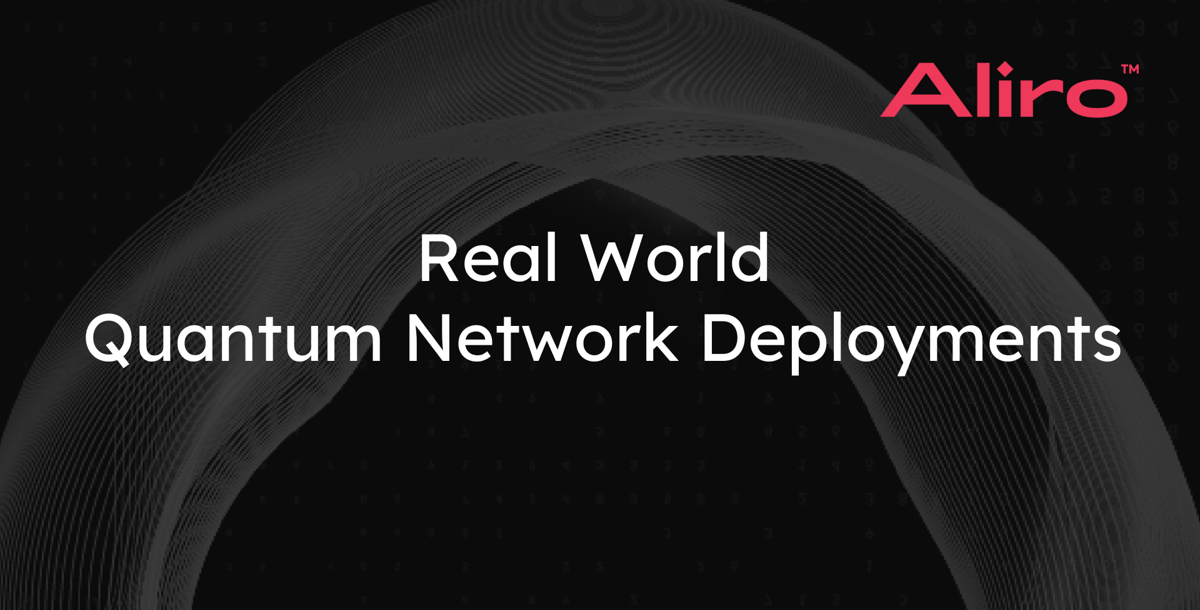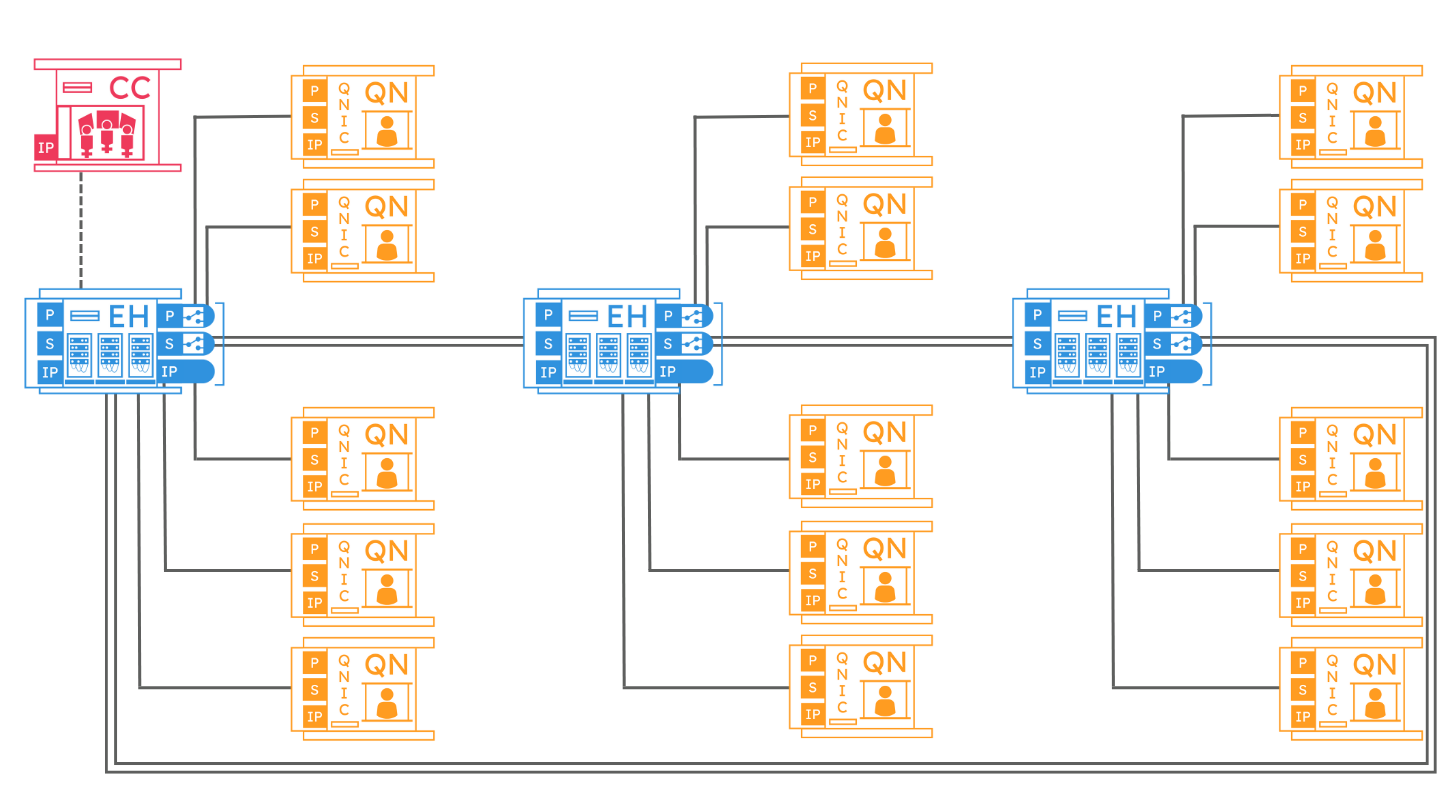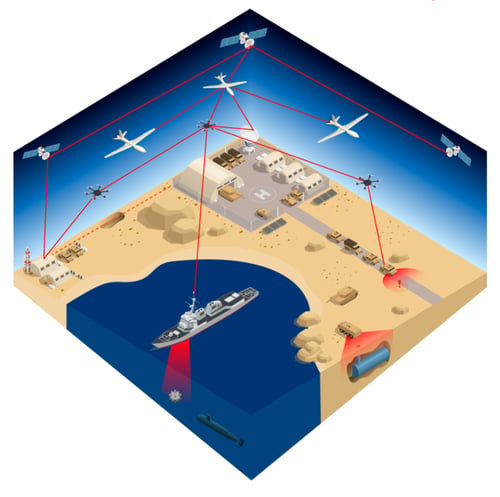
Multipurpose entanglement-based secure network trials, pilots, and deployments are growing across various enterprises and organizations. This article discusses three implementations. For more detailed information on use cases and applications, see our on-demand webinar.
There has been a renewed interest in quantum networks, leading to an increase in funding and investments to companies and organizations to further develop and deploy these quantum networks at scale. That renewed interest in quantum networking has led us into the quantum decade. 
In the graphic above, we see a few of the existing networks as well as some of the quantum networks that were announced through 2022. These networks represent a variety of use cases, from public test beds and networks such as the Department of Energy's Brookhaven National Lab, to commercially available networks, like the EPB Quantum Network in Chattanooga, Tennessee. These networks and testbeds all started small - some just two or three nodes - but were then scaled up, some to the Metropolitan size. They will continue to scale and connect to quantum networks across the country.
This approach - deploying small LANs then growing them and connecting them together - has been used before. This graphic shows the progression of ARPANET, the foundations for what would become the Internet, in the late 60s and 70s: building and deploying smaller scale networks, and then scaling those across the country and eventually, globally. As the Quantum Decade unfolds, we’ll see the foundations for the future Quantum Internet come into sharper focus. 
REAL WORLD DEPLOYMENTS: EXAMPLES
Aliro Quantum serves organizations and companies in a variety of different industries, including Enterprises, federal entities, and academic organizations in the US as well as internationally. Each of these is unique, with differing requirements, goals, and plans for their quantum network deployments. Each also has unique challenges, accompanied by new lessons learned. Here we’ll take a high level exploration using real-world examples of customer use cases and deployments. With the exception of the first use case, EPB, we have changed some details about the organizations to protect their privacy.
Energy and Telecommunications Organization: EPB
EPB launched a broadband data network on its fiber infrastructure over 10 years ago, and it has been a huge commercial success. Chattanooga was nicknamed “Gig City” and the economy has benefited tremendously from this advanced network. Recently EPB launched the first commercial quantum network in the US, EPB Quantum Network℠ powered by Qubitekk. Paying subscribers will get access to an entanglement- based network that is as advanced as any found in top universities or national labs.
Quantum networks have several early use cases, the most prominent being secure communications using entanglement (often called “physics-based security”). EPB customers will include researchers, companies developing new cybersecurity products, as well as enterprises in financial services, pharma, and energy where secure communications is a high priority.
EPB’s quantum network, shown schematically below, includes a network operations control center (CC), two equipment hubs (EH), and 10 quantum nodes (QN) for end user access to the quantum network. These are all interconnected via existing EPB high-speed fiber optical infrastructure.
As shown below, AliroNet™ centralizes, automates, and simplifies control of EPB Quantum Network℠ which includes more than 30 quantum devices.
The multitenant Aliro Orchestrator shown below provides a graphical user interface for quantum network operators and end users of the quantum network.
End users are able to select from a list of quantum components and click, drag, and drop devices to easily design their entanglement-based quantum network. AliroNet™ then validates their quantum network design for correctness.
The user can configure quantum network parameters of the network and specific components inside the network. This includes node and link configurations and an option to view logs.
AliroNet™ prepares the quantum network devices with the desired configuration and initializes the application or test based on the design and parameters then runs the application or test on the actual network for the duration set by the user. Once the experiment is complete, AliroNet confirms and reports the results followed by a deinitialization and reset of the quantum network devices.
For a video explaining this in more detail, along with a demonstration of the Aliro Orchestrator, please see this short video.
National Research Lab
Government funded research labs across the US are building entanglement-based secure network testbeds. Each lab has unique requirements for their entanglement-based quantum network – for example, different hardware, software, control, and network protocol needs. There are other differentiators as well, but they share an essential common goal: to accelerate the progress of entanglement-based secure networks and technologies.
The scientists and engineers at the research lab in this example did incredible work developing the quantum hardware used to build the network, but required control and orchestration software to shift the network from experimental to scaleable operation and enable more users to leverage the testbed. This entanglement-based secure network testbed and experimental facility is open to their user community. The network leverages orchestration and control software to simplify management, enabling seamless use of the network for both internal and external users. Access control and multitenancy is vital for any network, and especially those used by multiple organizations.
The networks will eventually be capable of expanding across multiple cities and will connect with other similar networks as a wide area network. There are two primary methods for doing this:
- Quantum repeaters to enable longer distance entanglement-based links when they become commercially available.
- Free-space optical components, which could be terrestrial with fixed laser telescopes, or non-terrestrial with satellites to connect entanglement-based secure networks to one another.
These advances will also lead to the building of the Quantum Internet.
Intelligence organization
Intelligence organizations can extract tremendous value from entanglement-based quantum networks, creating Quantum Secure Communication (QSC) channels and taking advantage of the multipurpose nature of these networks for distributed quantum sensing and networking quantum computers. Building metro area networks today to safeguard communication at individual locations between locations provides immediate value to the organization and is a vital step toward developing global Quantum Secure Communications.
The intelligence organization in this case is implementing its entanglement-based quantum network as a series of evolving topologies.
Step 1: Deploy a local area entanglement-based quantum network in the metro area at a single location to provide provably secure communications via QSC between buildings at the location.
Step 2: Deploy a second local area entanglement-based quantum network which will secure its location in a distant location. These two distant locations will be connected classically and use post quantum cryptography to offer additional security. Post quantum cryptography (PQC) is a purely classical solution offering additional but not provable security. As the entanglement-based quantum networks scale, PQC and QSC can be used together to provide security in depth.
Step 3: Expand to an entanglement-based secure wide area network by using terrestrial and non-terrestrial free space components. The metro area quantum network scales from a metro area network to a wide area network through the use of laser telescopes and via satellite using quantum secure communications to secure connections between locations.
An additional local area entanglement-based secure network will be implemented overseas and connected to the metro quantum network classically, utilizing PQC to secure the communication.
Quantum repeaters will be implemented as they become commercially available. The intelligence organization must choose where and when it will use scaling technologies such as quantum repeaters, terrestrial and non-terrestrial optical free space components, etc. Using simulator to model your quantum network can help to ensure the most effective and efficient method is used. In this way, the network will evolve into a global entanglement-based quantum network by the end of the decade.
This intelligence organization is focused on quantum secure communications, but planning to utilize other entanglement-based secure network use cases. As its entanglement-based quantum network scales, the organization will explore, test, and use applications of distributed quantum computing and sensing for additional offensive and defensive capabilities.
Pictured here is an example of what a quantum-enhanced battlefield might look like. 
This intelligence organization recognizes that quantum secure communications is the best long-term security solution. However, PQC can have an important role in the near-term for helping to secure communications. There are many important decisions to be made when it comes to how to scale your quantum network. Knowledge of the field and use of a simulator to model your entanglement-based quantum network will be incredibly important for such decision-making.
These examples show how real world entanglement-based quantum networks are being implemented across a variety of organizations, each with different goals for their network. The recent influx of activity and investment in entanglement-based quantum networks should be seen as no surprise: quantum networks are the future of secure networks, offering remarkable innovative use cases in addition to robust network security. Exploring entanglement-based secure network use cases can pay dividends for organizations and enterprises that make the investment before their competitors. For more details about the examples explored here, see our on-demand webinar.
